
Crystal-clear, gentle Azure sea watercolor swamp creeps on the sand. The upper section of it is an ideal horizontal, like the surface of water in the aquarium. The blue sea passes into the yellow sky, the horizon line is carefully verified according to the proportion of the “golden section”.
In one of the corners of the canvas is a ruler, a symbol of mathematical calculation. Its double-reflected shadow falls on water and sand. A small volume in reddish binding next to the ruler gives the impression of a mathematical reference rather than, say, a collection of poems. On the left and right, the stage is framed by rocky cliffs – the coastal rocks of Cadaques.
In the center of the canopy there is a pedestal. Above him, naked Gala soars in the image of Leda from the Greek myth. Her buttocks do not touch the pedestal, and her legs – stands-steps. Those, in turn, are hovering in the air. To the seductively perfect body of Leda, a big swan has come. He embraces her with wings, but does not touch her. His beak is near the woman’s head, as if he whispers something in her ear. Leda-Gala listens favorably to him. Her lips are filled with a dreamy, dreamy smile, her face is calm. There is no fear in it, it is not distorted by passion.
In this picture everything is calculated and weighed – literally. All the details of the picture soar in the air. Even the sea does not touch its own shore. This levitation is an echo of Dali’s impressions of the structure of the atom, all elements of which are subatomic particles – they are in interaction, not in contact with each other. Hence the epithet “atomic” in the title of the picture. The artist used the ancient myth of Zeus, who appeared to the Spartan queen Leda in the swan’s body and mastered it.
As a result of this union, two pairs of twins were born from two eggs taken by Leda: Elena, Polydeuk, Castor and Clytemnestra. At the bottom of the picture you can see an empty egg shell. Dali identified Gal with Leda, and himself with Zeus, but he also identified himself and his wife with twins who could not exist separately from each other.
Surprisingly, Dali, who saw the meaning of his existence and his purpose in shocking society, created, perhaps, the most chaste incarnation of the myth of Leda. Of all the artists who turned to this mythological scene, Dali paid the least attention to the carnal side of coition. There is no lust in the picture, there are no piquant or shocking details, there is only an infinite mutual admiration and unity of two beings destined for each other.
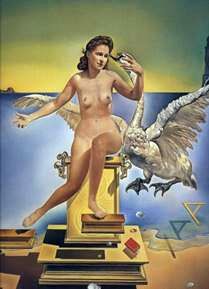 Atomic Leda – Salvador Dali
Atomic Leda – Salvador Dali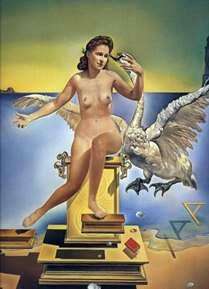 Leda Atómica – Salvador Dali
Leda Atómica – Salvador Dali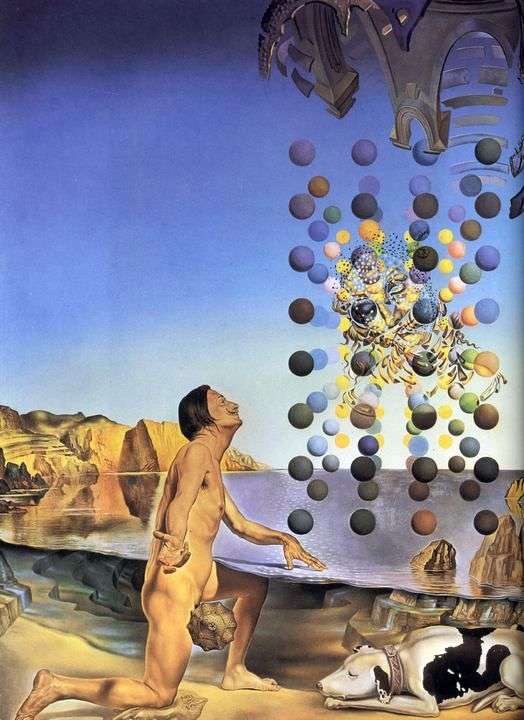 Naked Dali in front of five regular bodies by Salvador Dali
Naked Dali in front of five regular bodies by Salvador Dali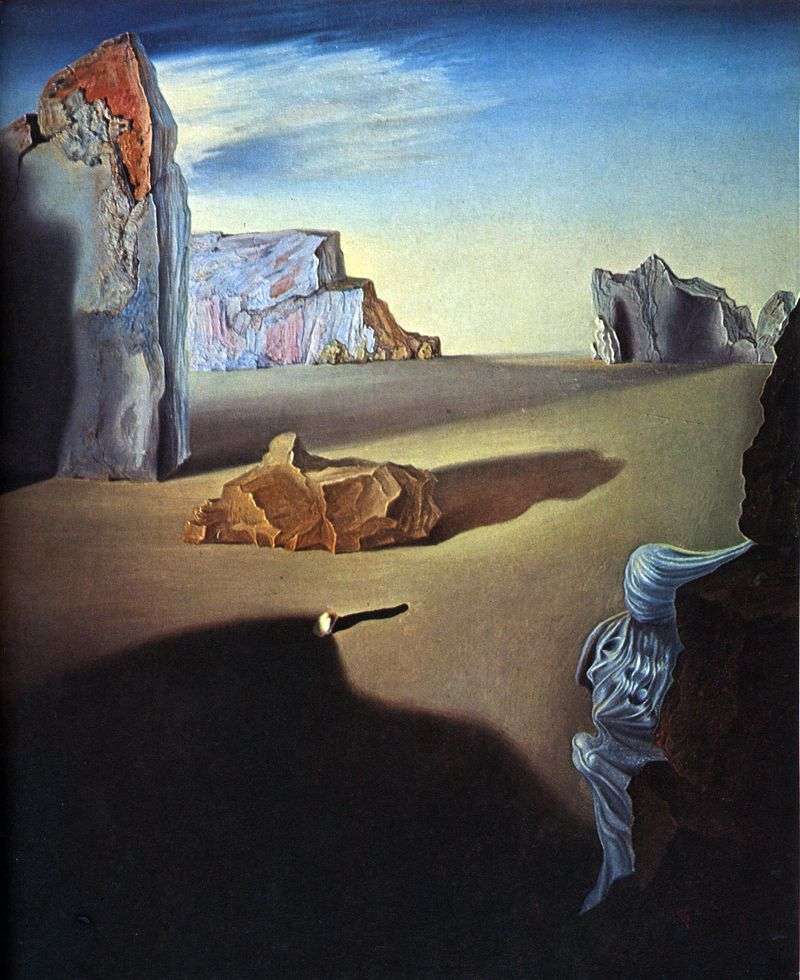 Shadows of the melting night by Salvador Dali
Shadows of the melting night by Salvador Dali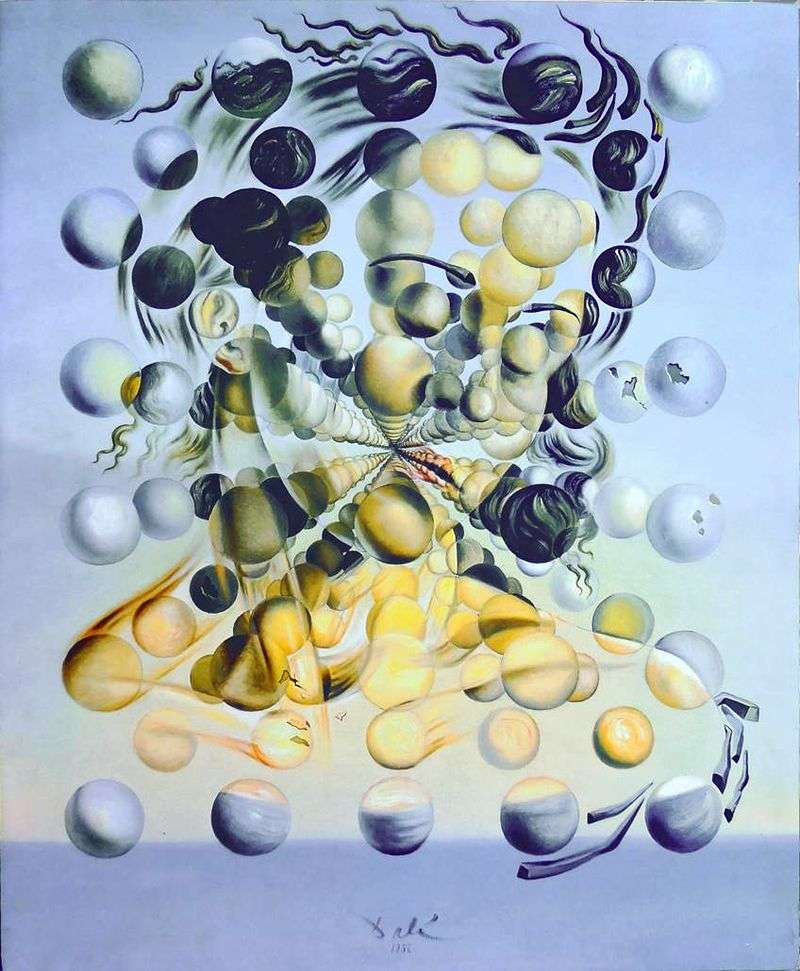 Galatea spheres by Salvador Dali
Galatea spheres by Salvador Dali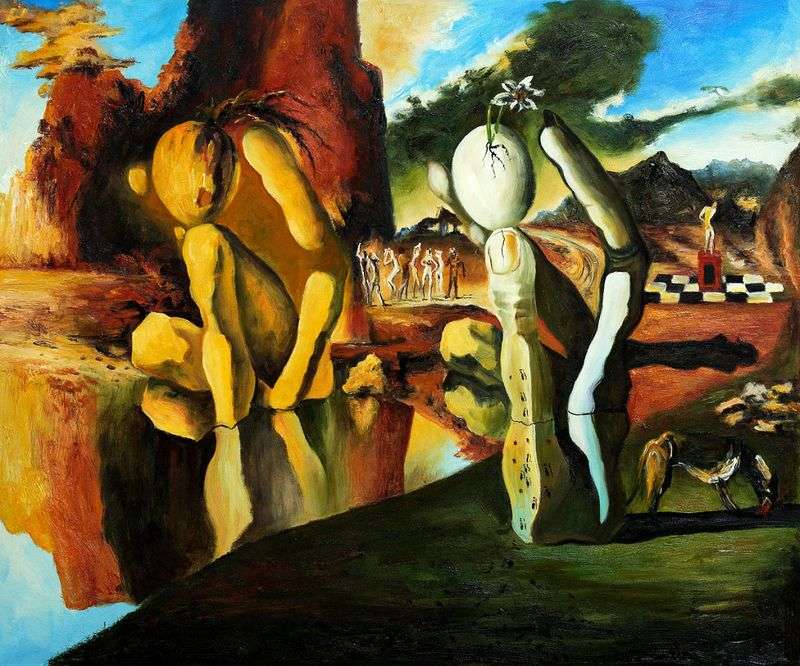 Metamorphosis of Narcissus by Salvador Dali
Metamorphosis of Narcissus by Salvador Dali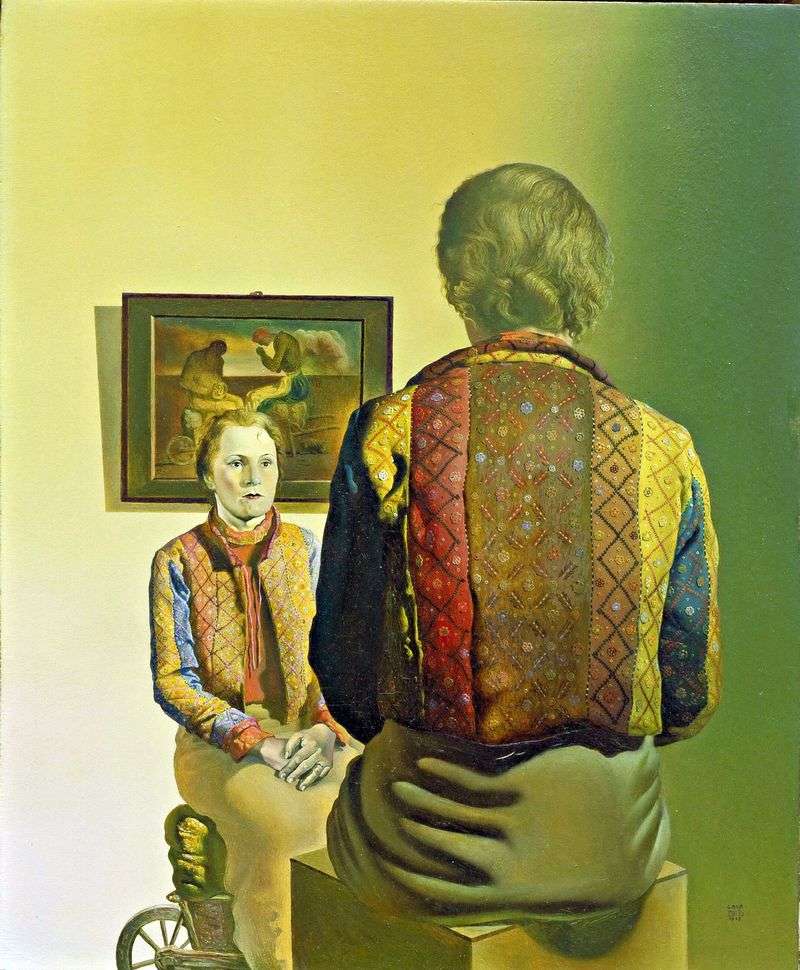 Portrait of Gala by Salvador Dali
Portrait of Gala by Salvador Dali Allegory of American Christmas by Salvador Dali
Allegory of American Christmas by Salvador Dali